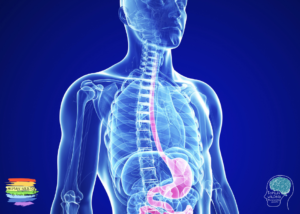Function of the olfactory sense
Olfaction, or the olfactory sense is multifunctional and crucial to human wellbeing. Also, the interrelated nature of olfaction is so complex that to describe all its functions would be impossible. For this reason, an oversimplification of its role is offered, stating that it: checks to ensure odour signals come from actual odours rather than villi irritation, regulates motor behaviour (primarily social and stereotypical) brought on by odours, integrates auditory and olfactory sensory data to complete the aforementioned tasks, and plays a role in transmitting positive signals to reward sensors (and is thus involved in addiction).
In the simplest terms, olfaction is involved in emotion, the detection of danger, connection, sexual attraction, reward and pleasure. Furthermore, smell is the most closely linked sense to our memory, meaning that odour can assist in memory retrieval.
Regulation of the olfactory sense
Smell is highly emotive, and individual. People who are highly sensitive to smells, can really enjoy some smells, but any unpleasant smells will be unbearable. They may find smells unbearable that others cannot even detect, or that many people like.
Olfactory hypersensitivity characteristics
- Avoid people who eat strong foods, or wears perfume
- Tell people they smell
- Dislike, or react negatively to, smells which others do not notice, or do not mind.
- Choose to breathe through their mouths rather than their nose
- Refuse to eat certain foods due to their smell
- Avoid certain environments, or has to leave places (zoos, certain shops, food markets)
- Refuse to use public toilets
- Become distressed by household smells, even those which others find pleasant
- Base friendships or person preferences on the way people smell.
Olfactory hyposensitivity characteristics
People with hyposensitive olfactory sensing might:
- Smell everything they come into contact with
- Not notice noxious smells that others do
- Actively seeks strong odours
- Crave strong tasting food
- Complain that food all tastes the same, or is boring.
Neurobiology of the olfactory sense
Like the sense of taste, the sense of smell, or the olfactory system, is also responsive to chemical stimuli. Unlike taste, there are hundreds of chemoreceptors (388 according to one source), each binding to a particular molecular feature. Odour molecules possess a variety of features and excite specific receptors more or less strongly. This combination of excitatory signals from different receptors makes up what humans perceive as the molecule’s smell.
Olfaction is one of the senses that have directly associated specific organs. Most mammals and reptiles have a main olfactory system and an accessory olfactory system. The main olfactory system detects airborne substances, while the accessory system senses fluid-phase stimuli.
The senses of smell and taste are often referred to together as the chemosensory system, because they both give the brain information about the chemical composition of stimuli.

The nose
The peripheral olfactory system consists mainly of the nostrils, ethmoid bone, nasal cavity, and the olfactory epithelium (layers of thin tissue covered in mucus that line the nasal cavity). The primary components of the epithelial tissue are the mucus membrane, olfactory glands and neurons, and nerve fibres of the olfactory nerves. Some neurons in the nose are specialised to detect pheromones. Olfactory receptor neurons in the nose differ from most other neurons in that they die and regenerate on a regular basis..
Odour molecules can enter the peripheral pathway and reach the nasal cavity either through the nostrils when inhaling (olfaction) or through the throat when the tongue pushes air to the back of the nasal cavity while chewing or swallowing (retro-nasal olfaction). Inside the nasal cavity, mucus lining the walls of the cavity dissolves odour molecules. Mucus also covers the olfactory epithelium, which contains mucus membranes that produce and store mucus and olfactory glands that secrete metabolic enzymes found in the mucus.
Cribriform plate
Olfactory neurons have cilia (tiny hairs) containing olfactory receptors that bind to odour molecules, causing an electrical response that spreads through the sensory neuron to the olfactory nerve fibres at the back of the nasal cavity. The nerves and fibres transmit information about odours from the peripheral olfactory system to the central olfactory system of the brain, which is separated from the epithelium by the cibriform plate of the ethmoid bone. Olfactory nerve fibres, which originate in the epithelium, pass through the cribriform plate, connecting the epithelium to the brain’s limbic system at the olfactory bulbs.
The olfactory cortex
In the brain, olfaction is processed by the olfactory cortex. The main olfactory bulb transmits pulses to both mitral and tufted cells, which help determine odour concentration based on the time certain neuron clusters fire (called ‘timing code’). These cells also note differences between highly similar odours and use that data to aid in later recognition. The cells are different with mitral having low firing-rates and being easily inhibited by neighbouring cells, while tufted have high rates of firing and are more difficult to inhibit.
The olfactory cortex connects to numerous areas of the amygdala, thalamus, hypothalamus, hippocampus, brain stem, retina, auditory cortex, and olfactory system. *In total it has 27 inputs and 20 outputs.
The amygdala (in olfaction) processes pheromone, allomone, and kairomone signals. Due to cerebrum evolution this processing is secondary and therefore is largely unnoticed in human interactions. Allomones include flower scents, natural herbicides, and natural toxic plant chemicals. The main olfactory bulb’s pulses in the amygdala are used to pair odours to names and recognise odour to odour differences.
Stria terminalis, specifically bed nuclei (BNST), act as the information pathway between the amygdala and hypothalamus, as well as the hypothalamus and pituitary gland. Mitral pulses to the hypothalamus promote or discourage eating, whereas accessory olfactory bulb pulses regulate reproductive and odour-related-reflex processes.
The hippocampus (although minimally connected to the main olfactory bulb) receives almost all of its olfactory information via the amygdala. The hippocampus forms new, and reinforces existing, memories. The orbitofrontal cortex (OFC) is heavily correlated with positive/negative reinforcement, and represents the emotion and reward in decision making.






